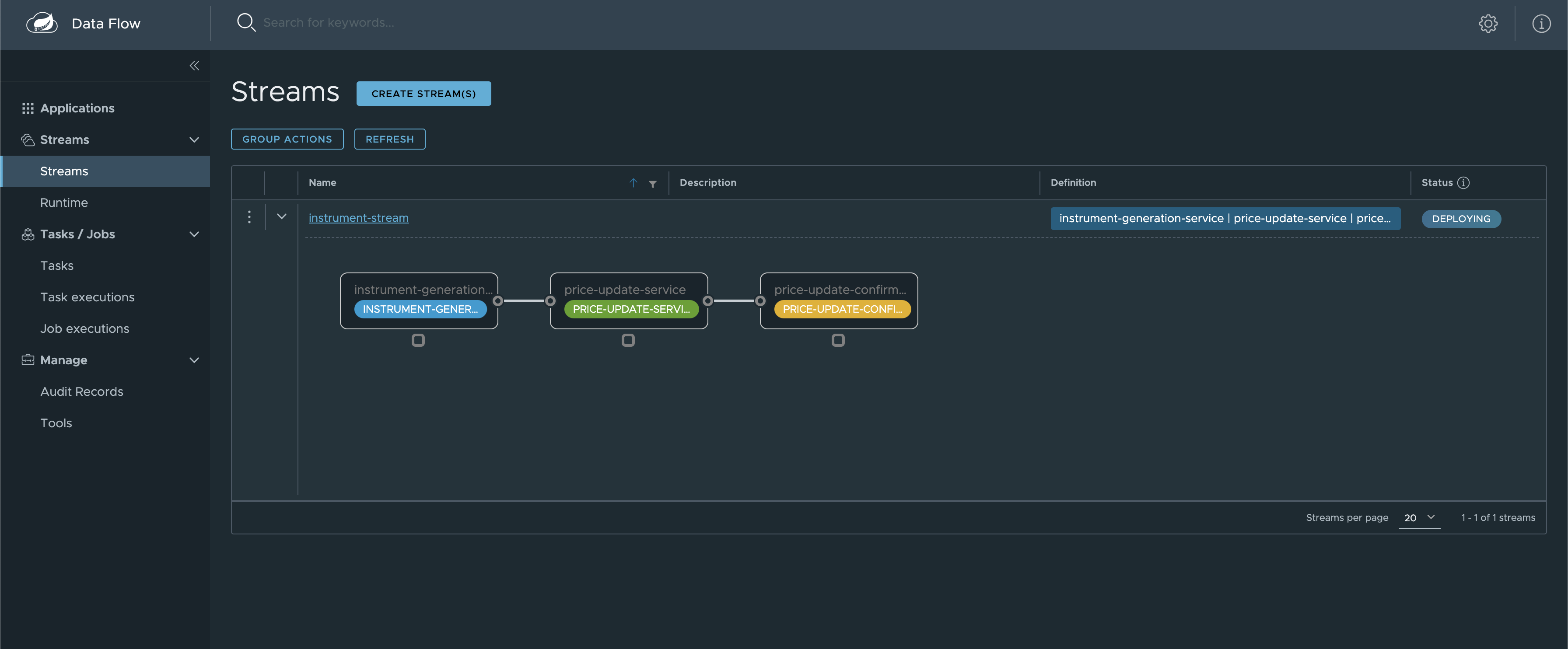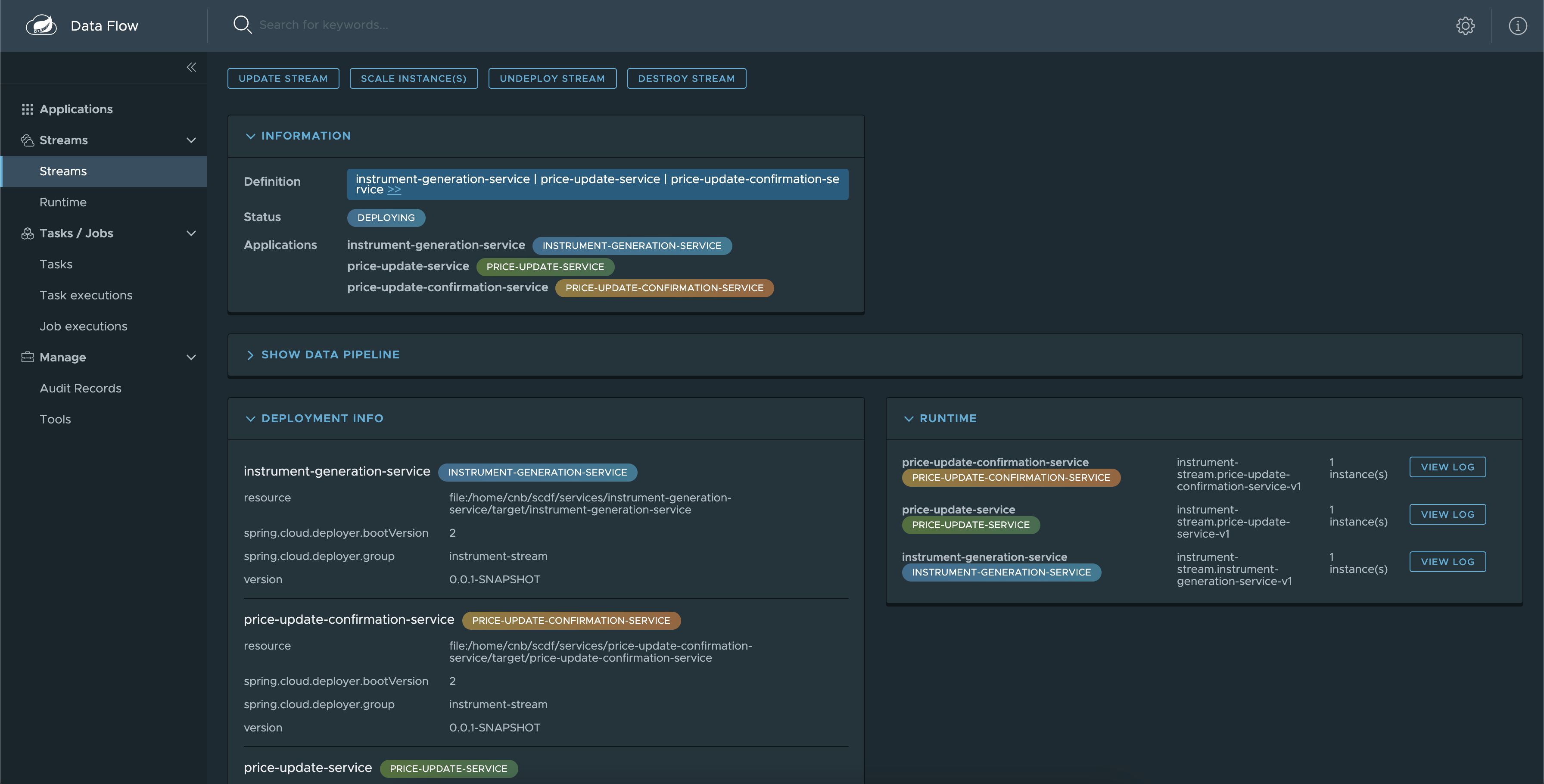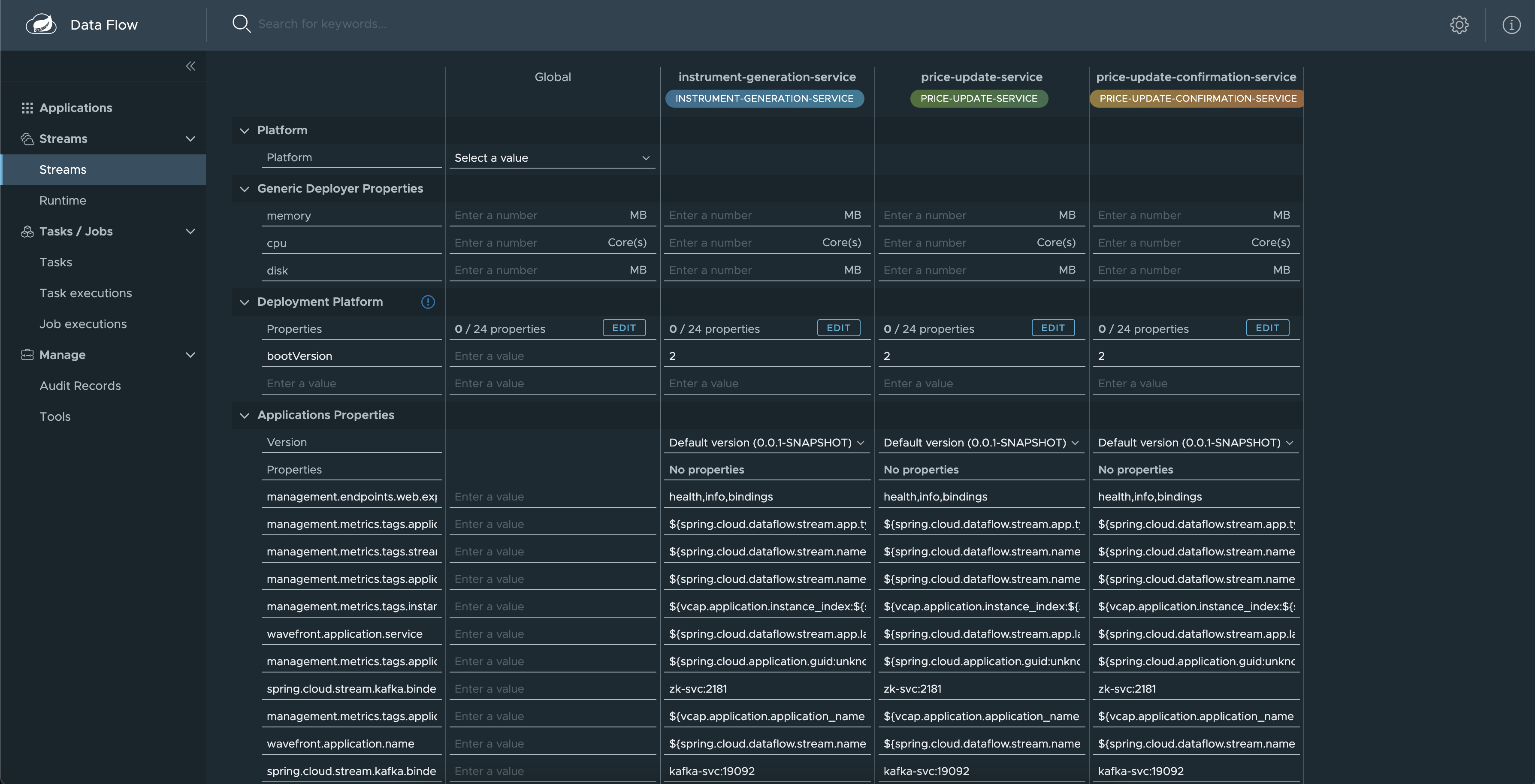This demonstration features the seamless integration of Spring Cloud Data Flow with Kafka-Binder, incorporating three microservices that are interconnected over message broker establishing a cohesive data workflow/pipeline.
Generate Stock Instruments -> Update prices for the Stock Insruments -> Confirm the updated prices of the Stock Insruments
- Microservice Type:
Data source - Creates a random stock instrument object with the instrument's name at a frequency of 1 instrument every second.
- Produces this stock instrument as a message to a topic on the message broker.
- Microservice Type:
Data processor - Listens to a topic on the message broker to receive instrument names.
- Updates the prices of stock instruments.
- Produces the updated stock instruments as a message to another topic on the message broker.
- Microservice Type:
Data sink - Listens to a topic on the message broker to receive stock instruments with updated prices.
- Writes the price update confirmation to the console (stdout).
The microservices are configured and orchestrated using the Spring Cloud Data Flow framework. Here's an overview of the process:
Microservices are registered as applications with the Spring Cloud Data Flow server. The path to the executable JAR files is specified during registration.
Streams (workflows/pipelines) are created using the registered applications. A common configuration for using Kafka as a message broker is specified during stream creation. This approach ensures consistency across all applications within the stream.
Once a stream is created, it is deployed to initiate data processing.
The stream is setup with a common configuration to use Kafka as a message broker. This is not configured at each application level, but instead specified at the time of creating a stream. This allows all the apps in the stream to use the same Kafka configuration.
The docker-compose setup defines all the base services required to run the entire workflow.
flowchart LR
igs[Instrument Generation Service]
pus[Price Update Service]
pucs[Price Update Confirmation Service]
t1[Topic1];
t2[Topic1];
igs --> t1;
t1 --> pus;
pus --> t2;
t2 --> pucs;
subgraph Kafka
t1[Topic1];
t2[Topic1];
end
make buildmake start-servicesWith all services up, access:
| Description | Link |
|---|---|
| Kafka UI | http://localhost:8080 |
| Grafana UI | http://localhost:3000 |
| Spring Cloud Data Flow Dashboard | http://localhost:9393/dashboard |
| Spring Cloud Data Flow Endpoints | http://localhost:9393/ |







